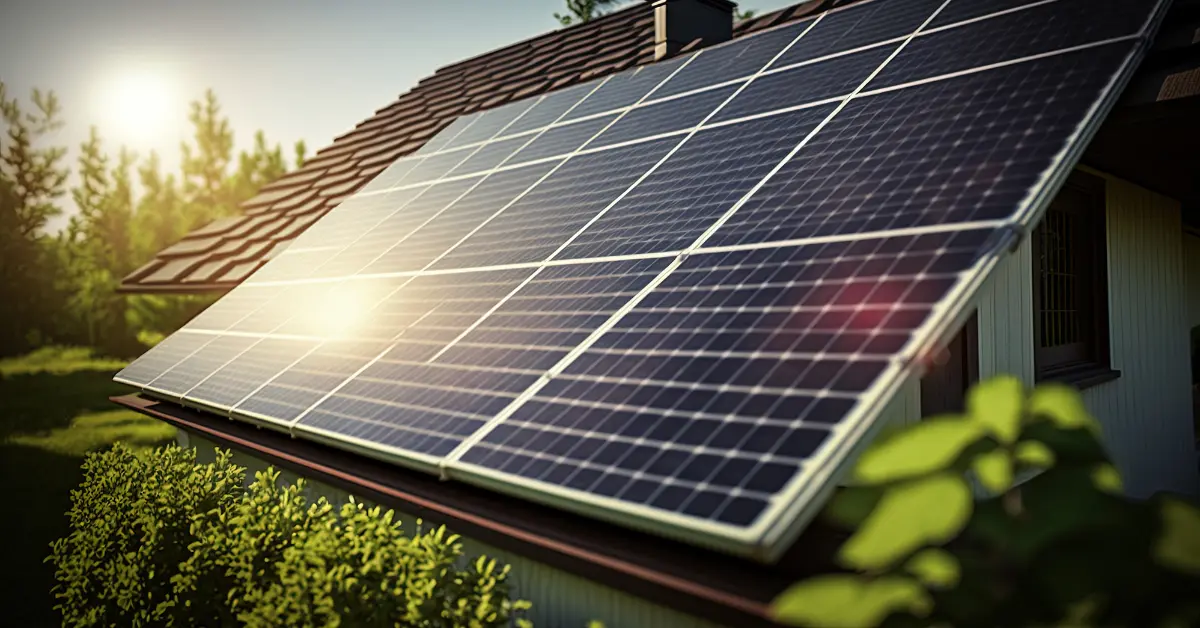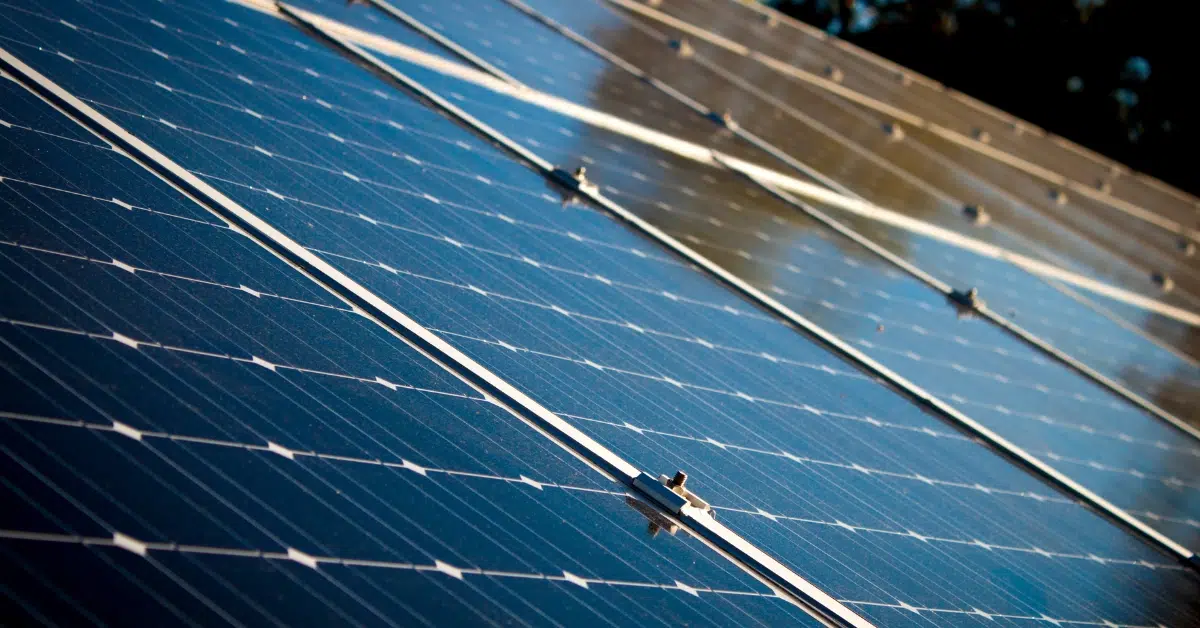Solar energy offers a sustainable solution to rising energy costs and environmental concerns. The 2024 Oklahoma solar tax credit provides significant financial incentives for residents to transition to solar power. Qualifying for these tax credits can lead to substantial savings on installation costs and long-term energy bills. Oklahoma’s sunny climate, with approximately 235 days of sunlight annually, makes it an ideal location for solar energy adoption. Homeowners can also benefit from net metering policies, which allow them to receive credits on their electricity bills for excess energy generated.
Understanding Oklahoma Solar Tax Credits
What Are Oklahoma Solar Tax Credits?
Definition and Purpose
Oklahoma Solar Tax Credit provides financial incentives for residents who install solar energy systems. These credits reduce the overall cost of solar installations, making renewable energy more accessible. The primary purpose of these tax credits is to encourage the adoption of solar energy, which helps reduce carbon emissions and reliance on non-renewable energy sources.
Federal vs. State Tax Credits
Residents in Oklahoma can benefit from both federal and state solar tax credits. The federal solar tax credit, also known as the Solar Investment Tax Credit (ITC), allows homeowners to deduct 30% of the cost of installing a solar energy system from their federal taxes. Oklahoma offers additional state-level incentives that further reduce the cost of solar installations. Understanding the differences between federal and state tax credits is crucial for maximizing savings.
Overview of Oklahoma’s 2024 Solar Tax Credits
Eligibility Criteria
To qualify for Oklahoma Solar Tax Credit in 2024, residents must meet specific eligibility criteria. The solar panel system must be new and installed on a residential or commercial property within Oklahoma. Previously used solar systems do not qualify. Homeowners must have taxable income to claim the Oklahoma solar tax credit. Additionally, those who install solar panels through a lease or power purchase agreement (PPA) are not eligible for the tax credit.
Key Benefits
Oklahoma Solar Tax Credits offer several key benefits. First, residents can receive a significant percentage back on the cost of purchasing and installing a solar energy system. This reduces the upfront investment required for solar installations. Second, the credits help lower long-term energy bills by promoting the use of renewable energy. Third, Oklahoma’s sunny climate, with approximately 235 days of sunlight annually, enhances the efficiency of solar panels, increasing the overall savings. Lastly, net metering policies in Oklahoma allow homeowners to receive credits on their electricity bills for excess energy generated by their solar panels.
Calculating Your Savings with Solar Tax Credits in Oklahoma
How to Estimate Your Solar Savings in Oklahoma
Factors Affecting Savings
Several factors influence solar savings in Oklahoma. The cost of electricity plays a significant role. Higher electricity rates lead to greater savings from solar energy. The size of the solar system also impacts savings. Larger systems generate more electricity, reducing reliance on grid power.
The amount of sunlight received affects solar panel efficiency. Oklahoma enjoys approximately 235 sunny days annually, enhancing solar energy production. Installation costs vary based on system size and complexity. Oklahoma’s average price for a photovoltaic (PV) system is around $36,740, which is higher than the national average. However, the cost per watt is slightly below the national average.
State and federal incentives significantly reduce installation costs. The federal Solar Investment Tax Credit (ITC) allows homeowners to deduct 30% of the installation cost from federal taxes. Oklahoma offers additional state-level incentives. Net metering policies provide credits for excess energy generated, further increasing savings.
Tools and Resources
Several tools and resources help estimate solar savings. Online calculators provide a quick estimate based on location, system size, and electricity usage. The National Renewable Energy Laboratory (NREL) offers a PVWatts Calculator. This tool estimates energy production and cost savings for grid-connected PV systems.
Solar installers often provide detailed savings estimates during consultations. These estimates consider specific factors such as roof orientation, shading, and local electricity rates. Utility companies may offer resources and incentives for solar installations. Researching available programs can maximize savings.
Example Calculations for Solar Savings
Residential Solar Systems
A typical residential solar system in Oklahoma might cost $36,740 before incentives. The federal ITC reduces this cost by 30%, saving approximately $11,022. State incentives further reduce the cost. Net metering policies provide additional savings by crediting excess energy generated.
Assuming an average electricity rate of $0.11 per kilowatt-hour (kWh), a 10-kilowatt (kW) system could generate around 14,000 kWh annually. This generation offsets a significant portion of household electricity usage, leading to substantial savings on energy bills. Over 20 years, Oklahoma residents save an average of $26,212 with solar panels.
Commercial Solar Systems
Commercial solar systems involve larger installations and higher initial costs. A commercial system might cost $100,000 before incentives. The federal ITC reduces this cost by 30%, saving $30,000. State incentives and net metering policies provide additional savings.
A 50-kW commercial system could generate around 70,000 kWh annually. Assuming an average electricity rate of $0.10 per kWh, this generation offsets a significant portion of business electricity usage. Over time, the savings on energy bills contribute to a quicker return on investment.
Commercial properties benefit from accelerated depreciation through the Modified Accelerated Cost Recovery System (MACRS). This depreciation reduces taxable income, providing further financial benefits. Businesses should consult with tax professionals to maximize savings.
By understanding these factors and utilizing available tools, Oklahoma residents and businesses can effectively estimate and maximize their solar savings.
Application Process for Oklahoma Solar Tax Credits

Steps to Apply for Oklahoma Solar Tax Credits
Required Documentation
Applicants need specific documents to apply for Oklahoma Solar Tax Credits. Gather detailed records of installation expenses. Include invoices and receipts from the solar installer. Obtain a copy of the contract with the solar provider. Provide proof of payment, such as bank statements or canceled checks.
Collect documentation showing the installation date. Ensure the system was placed in service after the qualifying dates. Homeowners must also provide proof of ownership. Include property deeds or mortgage statements. Keep a copy of the solar panel certification. The system must meet performance and safety standards.
Submission Process
The submission process involves several steps. First, complete the necessary tax forms. Use IRS Form 5695 for federal tax credits. Oklahoma residents must also fill out state-specific forms. Consult the Oklahoma Tax Commission website for details.
Attach all required documentation to the forms. Double-check for completeness and accuracy. Submit the forms with your annual tax return. File both federal and state returns on time. Missing deadlines can result in disqualification.
Consider consulting a tax professional. They can ensure proper completion and submission. Tax professionals can also help maximize savings. Proper filing ensures eligibility for both federal and state credits.
Common Pitfalls and How to Avoid Them
Incomplete Applications
Incomplete applications often lead to delays or denials. Ensure all sections of the forms are filled out. Double-check for missing information. Attach all required documentation. Missing documents can result in rejection.
Review the application before submission. Verify that all signatures are present. Incomplete applications waste time and resources. Thorough preparation prevents common mistakes.
Missing Deadlines
Missing deadlines is a frequent pitfall. Mark important dates on a calendar. Set reminders for filing deadlines. Federal and state deadlines may differ. Ensure timely submission for both.
Late submissions can result in disqualification. Plan ahead to avoid last-minute issues. Gather documents and complete forms early. Early preparation ensures a smooth application process.
By following these steps and avoiding common pitfalls, Oklahoma residents can successfully apply for solar tax credits. Proper documentation and timely submission are key to maximizing financial benefits.
Additional Incentives for Oklahoma Solar
Rebates and Grants
Available Programs in Oklahoma
Oklahoma offers various rebates and grants to support solar energy adoption. The Oklahoma Gas & Electric (OG&E) Solar Power program provides rebates to customers who install solar panels. These rebates reduce the initial costs of solar installations, making them more affordable. The Oklahoma Department of Commerce occasionally administers grants for larger-scale solar projects. These grants provide financial support for significant solar ventures, encouraging widespread adoption.
How to Apply
Applying for rebates and grants involves several steps. First, residents must research available programs. Utility companies like OG&E provide detailed information on their websites. Applicants need to gather necessary documentation, including proof of installation and receipts. Submission forms must be completed accurately. Residents should submit these forms along with the required documents to the respective utility company or government agency. Timely submission ensures eligibility for financial incentives.
Net Metering
Explanation of Net Metering
Net metering allows solar panel owners to receive credits for excess energy generated by their systems. When solar panels produce more electricity than needed, the surplus energy feeds back into the grid. The utility company then credits the homeowner’s account for this excess energy. This system ensures that no energy goes to waste and provides financial benefits to solar users.
Benefits for Solar Users
Net metering offers several advantages for solar users in Oklahoma. First, it reduces monthly electricity bills by crediting excess energy produced. Homeowners can offset their energy consumption costs, leading to significant savings. Second, net metering encourages efficient energy use. By generating and using renewable energy, residents contribute to environmental sustainability. Third, net metering enhances the return on investment for solar installations. The credits received for excess energy shorten the payback period, making solar energy more financially attractive.
Frequently Asked Questions about Oklahoma Solar Tax Credit
Common Concerns and Misconceptions About Tax Credits in Oklahoma
Eligibility Questions
Many residents wonder about the eligibility criteria for Oklahoma solar tax credits. To qualify, homeowners must install new solar panel systems on residential or commercial properties within Oklahoma. Previously used systems do not meet the requirements. Homeowners need taxable income to claim the credits. Those who opt for solar leases or power purchase agreements (PPA) cannot claim the tax credit.
Some people believe that only large solar installations qualify for credits. However, both small and large systems can benefit from these incentives. The key is ensuring the system meets performance and safety standards.
Financial Concerns
Financial concerns often arise when considering solar investments. Some residents worry about the upfront costs of solar installations. Oklahoma solar tax credits significantly reduce these initial expenses. The federal Solar Investment Tax Credit (ITC) allows a deduction of 30% of the installation cost from federal taxes. Oklahoma offers additional state-level incentives, further lowering the financial burden.
Another common misconception involves the duration of the tax credits. Oklahoma solar tax credits are available through 2024. Availability beyond this date depends on legislative updates. Residents should take advantage of these incentives while they last.
Many people question the return on investment for solar systems. Oklahoma’s sunny climate enhances the efficiency of solar panels. Net metering policies provide credits for excess energy generated, leading to substantial savings on electricity bills. Over time, these savings contribute to a quicker return on investment.
Taking advantage of solar tax credits in Oklahoma offers significant financial benefits. Early application ensures eligibility and maximizes savings. The 2024 Oklahoma solar tax credits can reduce installation costs and lower long-term energy bills.
“Through intelligent use of the state’s tax credits and the Federal Solar Investment Tax Credit (ITC), the complex slashed its energy bills by a staggering 60%, an economic epiphany that rippled through their balance sheets.”
For further information, consult resources such as the Oklahoma Tax Commission website and local utility companies. These sources provide detailed guidance on the application process and additional incentives.






